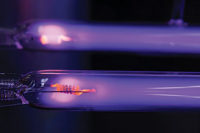Certain aspects of the current building process make integrated systems needlessly more expensive and troublesome to construct. Just ask anyone in our industry about their lighting control integration experiences. Some common responses you may hear are: “It does not work,” “Integration is too difficult,” or “We just keep lighting controls separate.” Fortunately, the problem is not the technology, the lack of demand, or the people involved; rather, it is the process.
In our industry, there is a growing realization that integrating lighting controls into the BAS is the most efficient way of making HVAC and lighting controls manageable both in a building project and in a building as an ongoing enterprise. There is no doubt that the products, technology, and open protocols are readily available. However, the implementation of this ideal has proven to be a rocky road through inherent uncertainties in the current design, bid, procurement, and construction process. Where are the rocks in the road? How did they get there, and how can we make the road a smoother one for designers, contractors, and ultimately the facility manager?
How Did We Get Here?
In the ’90s, yet more levels of complexity were added. The relay boxes could be networked into a lighting control system with a computer. Advanced “integrated” lighting controls could become part of the BAS along with HVAC controls. ECs found themselves contractually responsible for systems that were increasingly beyond their scope and profitability. Uncertainty grew as the technology advanced. The responsibility to procure and install, configure, and integrate the lighting control system fragmented into separate camps. The EC was contractually responsible for purchasing and installing the system, yet others were needed to make the system work. The manufacturer was flown in to configure it. A new player on site, the BAS contractor, was asked to cooperate with the manufacturer to integrate it.
The Problem
A Win-Win-Win-Win Solution
It is clear that no one has a stake in maintaining these uncertainties. There is a way of specifying integrated lighting controls that moves the expertise and accountability back to a local level. Simply put: The building automation contractor provides the lighting control and the electrical contractor installs it.
Using this methodology of specification, the BAS contractor chooses a lighting control system proven to interoperate with the equipment and includes that system in his bid without any uncertainty. Win. Likewise, the electrical contractor develops his bid knowing that he is clearly responsible for installing the lighting control system and ensuring electrical power and connectivity to the lighting. Win. The designers can easily, confidently, and clearly specify that the lighting control system is provided by the BAS contractor and is installed by the electrical contractor. Win. The owner gets an integrated EMS that is sustainable and maximizes optimal efficiency. Win. IBT

